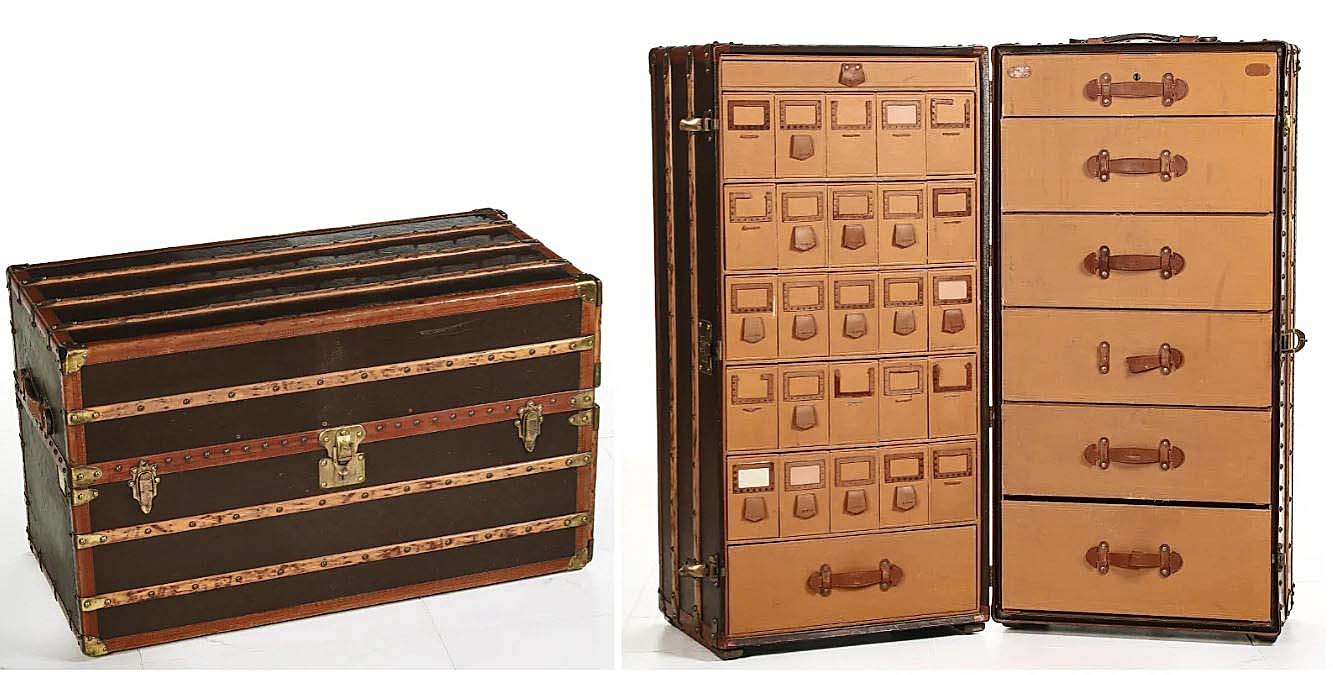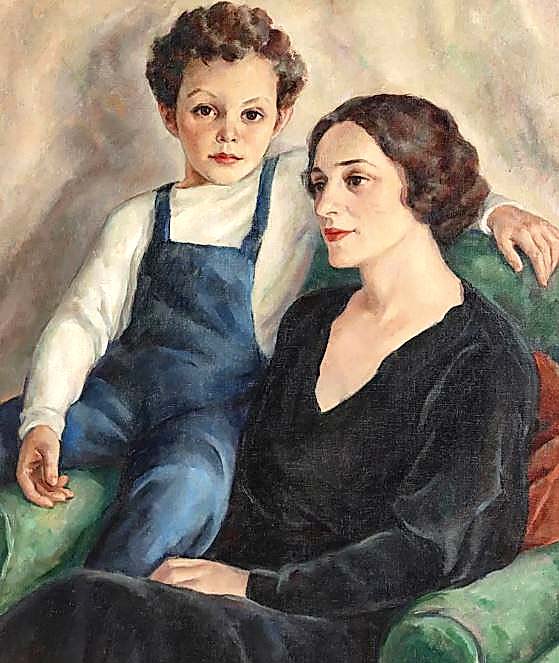
Birger Sandzen’s “Golden Aspens” led the sale at $190,000, going to a prominent Kansas politician. From 1929 during the artist’s most desirable middle period, the painting had been acquired directly from the artist by a rural Kansas public library and had carried an estimate of $80/120,000.
Review by W.A. Demers; Photos Courtesy Soulis
LONE JACK, MO. — Dirk Soulis’ 313-lot October 14 gallery auction focused on regionalism and Kansas City art history and was led at $190,000 by Birger Sandzen’s (Swedish/American, 1871-1954) “Golden Aspens,” going to a prominent Kansas politician. Vertically oriented and from 1929 during the artist’s most desirable middle period, the oil on canvas composition was signed and dated and had a robust color palette applied in high relief impasto. The 40½-by-30-inch painting had been acquired directly from the artist by a rural Kansas public library and had carried an estimate of $80/120,000.
These are “homegrown” artists who went on to achieve success on the national or international stage, according to Soulis, who added, “perhaps no other part of the country has embraced the Regionalist art movement with more fervor than the Midwest.”
For example, Kansas City artist Arthur Kraft (1922-1977) made a small untitled mural in oils (A Soldier’s Surreal Reverie) in the early to mid-1940s. He painted it on a type of fiber board in two sections. Signed “Art Kraft” lower right, it realized $4,140. Kraft had a short period of Realism early on, and this, said Soulis, was the first and best example of that to hit the market — though it displayed his trademark mischievous surrealism as well. He skewed Expressionist after the War. It set a new auction record for two-dimensional work for the artist.

This Modernist industrial scene by little-known Regionalist Charles Hechter from Illinois smashed any previous sales result at auction for the artist. With a second composition, a seated nude, painted verso, it went out at $12,000.
Soulis said the backstory for this small mural is not known. What is known is that Arthur Kraft served in World War II as private first class with the Air Corps in the Pacific, assigned work as an artist with the Fifth Air Force. It is also known that he was awarded first prize in the 1945 Army Arts Exhibition in San Francisco. A $100 war bond was given to the winner in each of eight classes: oil and tempera, watercolor and gouache, sculpture, renderings, drawings, prints, photographs — and mural design.
Obliterating any previous sales result at auction for little-known Regionalist Charles Hechter (1886-1951) from Illinois was an untitled 1938 oil on canvas depicting a Modernist industrial scene. The painting, registered as being by an Illinois WPA artist, is signed and dated lower left front. A second composition, a seated nude, is painted verso. It went out at $12,000. Hechter attended the Minneapolis School of Fine Art, and was a member of the United American Artists, Chicago. His works were exhibited at the Art Institute of Chicago in 1942 and 1950, and at Navy Pier with the New Jersey Society of Artists exhibition.
Sometimes persistence and research pay off, said Soulis. A rustic scene by Louis Freund (1905-1999) was offered at a different auction house in November 2022 and failed to sell. “I was able to determine that the subject was a Black-owned grocery and blacksmith shop in Conway, Ark.,” said Soulis. “The hammer price this time matched an auction record we set for the artist last year. With premium, it rose to $7,800. Done in 1935 or 1936, the untitled painting of a rickety country establishment provided a clue with the sign out front lettered “Mattison.”

Some sleuthing for this rustic scene by Louis Freund revealed that its subject was a Black-owned grocery and blacksmith shop in Conway, Ark. Done in 1935 or 1936, the untitled painting rose to $7,800. The clue was the sign out front lettered “Mattison,” matching records of the Mattison family, which started a blacksmith shop at Mill and Markham in the early 1900s, which grew into a general repair and welding shop then transitioned to auto repair.
According to catalog notes, in September 2021, the city of Conway commissioned an African American Historic Context Study in which researchers documented the history of Black-owned businesses in Conway. Researchers found that, “The Mattison family started a blacksmith shop at Mill and Markham in the early 1900s, which grew into a general repair and welding shop then transitioned to auto repair.”
The sale included paintings from the home of Rita and Thomas Hart Benton. Fetching $3,450 was a Margaret Brisbine (1901-1991) portrait of Rita and T.P. Benton, which was commissioned by Benton in the early 1930s. This painting, dated 1934, was acquired directly from the family trust through Jessie Benton. It had been commissioned by Thomas Hart Benton in the early 30s, a time when both Benton and Margaret Brisbane lived in New York. It was exhibited at the Manor Club of Pelham, N.Y., where a reviewer described it as, “Mrs Thomas Benton, wife of a noted artist, and “T.P.” a delightful little boy with unruly curls.”
Of course, Benton and the other two members of the “Big Three of Midwest Regionalism — John Steuart Curry and Grant Wood — were well represented. Wood’s (1891-1942) 1939 lithograph of fruits sold for $3,840. The lithograph from an edition of 250 prints was signed by Wood lower right side of the image and published by Associated American Artists in an edition of 250 prints. The artist’s sister, Nan Wood Graham, applied the color by hand. The same price was attained by a similar colored litho of vegetables. His “Tame Flowers” colored litho sold to an Iowa University Museum for $2,640.

A rare Louis Vuitton shoe trunk with fitted interior brought triple its high estimate, leaving the gallery at $36,000.
Beyond art, a rare Louis Vuitton shoe trunk with fitted interior brought triple its high estimate, leaving the gallery at $36,000, while a rare “Sheriff of London” Eighteenth Century tole wine trolley pair celebrated $6,600, and an Eighteenth Century Regency convex mirror with winged hippocampus blitzed its $800-$1,200 estimate, finishing at $,3,680.
Finally, said Soulis, a pair of green ground famille rose type beaker vases that had been drilled for use as lamps, “was one of those exciting outliers we began seeing in Chinese arts 10 or 15 years ago, going out at $15,600 ($300/600).”
Prices given include the buyer’s premium as stated by the auction house. For information, www.soulisauctions.com or 816-697-3830.








